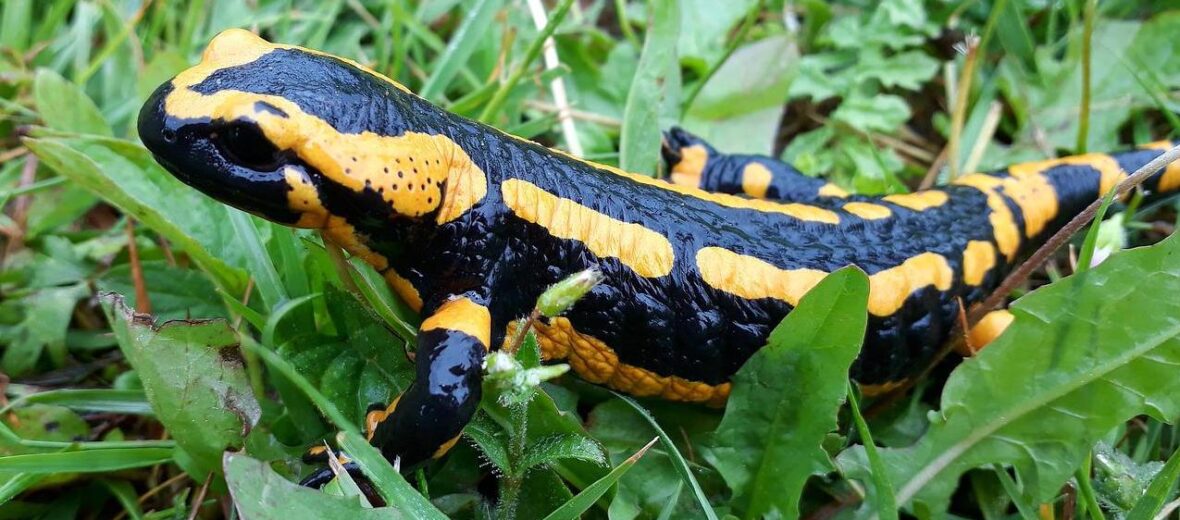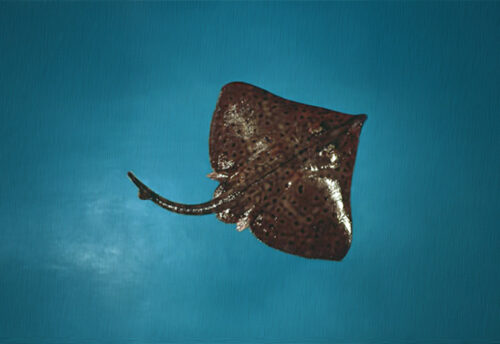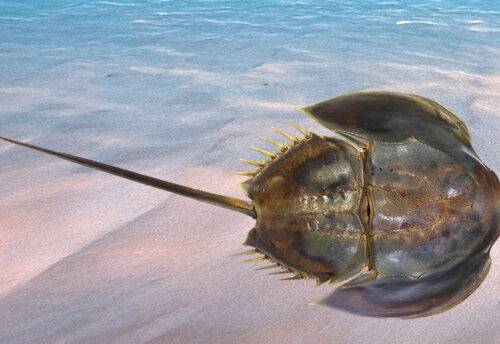
The fire salamander is a toxic salamander that can be found throughout central Europe. They prefer deciduous forests that house small brooks of clean water. Based on the subspecies, their coloration can vary. Some are almost totally black, while others have more yellow than black. Still others even display reds and oranges, with black. Even though these critters face the threats of habitat destruction, hunting, trapping, pollution, and invasive species (and with them diseases – like the deadly chytrid fungus), they are still listed as Least Concern by the IUCN. But their numbers are decreasing.
First the Stats…
Scientific name: Salamandra salamandra
Weight: Up to .67 ounce
Length: Up to 9.8 inches
Lifespan: Up to 14 years
Now on to the Facts!
1.) These sallies spend most of their time hidden under wood and leaves.
2.) Insects, arachnids, earthworms, and slugs are all on the menu, but they will also occasionally eat newts and young frogs.
3.) They use their sticky tongue and vomerine teeth, which are merely more than mandibular ridges, to hold onto prey and swallow their prey whole.
4.) Fire salamanders intentionally advertise bright colors in an effort to advertise their toxicity. This is called aposematic signalling.
5.) Courtship takes place on land. After a potential mate is found, the male confronts her and blocks her path. The male will then rub the female with his chin to indicate intent.
But wait, there’s more on the fire salamander!
6.) The male then crawls beneath her and grasps her front limbs with his in what is called amplexus. He deposits a spermatophore on the ground, and then attempts to lower the female’s cloaca (ventral region used for defecation and reproduction) into contact with it.
7.) Eggs are developed internally and, when ready, the female will deposit the larval salamanders into a nearby body of water to continue to develop.
Did you know…?
Their alkaloid toxin, called samandarin, causes powerful muscle convulsions and hypertension, combined with hyperventilation in all tested vertebrates. Death is a potential.
8.) In captivity, females have been known to retain sperm packets to produce multiple broods with just a single copulation event.
9.) The poison glands are located around the head and the dorsal skin surface.
10.) Certain compounds in the skin secretions might be effective against bacterial and fungal infections.
But wait, there’s still more on the fire salamander!
11.) As some salamanders have been known to do, they will eat their shed skin.
12.) As a defense, they can engage in caudal and digit autonomy. This is where they can break off their tail and even limbs, if being attacked by a predator. These regrow in their entirety in time.
13.) Grass snakes, larger reptiles, and hawks will sometimes prey on these sallies.
Now a Short Fire Salamander Video!
Be sure to share & comment below! Also, check out the Critter Science YouTube channel. Videos added frequently!
Want to suggest a critter for me to write about? Let me know here.



